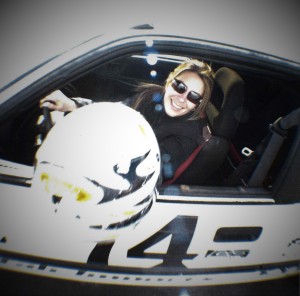Many years ago…in another lifetime, I dabbled in auto racing (specifically rally and autocross for those fellow enthusiasts). While there are many skills you learn in racing, arguably the most important is where to look.
THE RULE: You look where you want to go.
It is deceptively simple advice. Why? Because we are trained to drive using certain tools and methods to keep us safe. When you drive competitively you must employ different techniques designed to get you where you are headed faster, more effectively and, ideally, before the other guy. The downside (there always is one you know)- there are risks.
Relying on traditional driving tools and methods, novice racers can be distracted by the cars beside and behind them observing their progress. While others focus on their instruments- checking RPM and speed- instead of feeling their car’s performance and response to the road for a faster response time. Some look only a few paces in front of their car. Unfortunately, when they do this they only see what really, in essence, is already done. There is no time for course correction. Looking a few paces in front is to look at the result of decisions already made. All these traditional practices of driving, slow you down and shift your focus from where you are going. When racing you look up and ahead. What is coming? Where do you need to position your wheels to take that next curve? The really experienced drivers have studied the track in advance and know the curve after the next one. They not only know how to set up for the coming curve but how to exit in preparation for the one they can’t even see.
Libraries have been talking about the future for decades. SO why are we still having the same conversations? Why aren’t we making more headway? Because we are relying on our traditional tools for our decision making and thus ending up with traditional results.
These outmoded methods include:
- Look for Trends: Much like the driver who monitors the cars around them, we become distracted by those around us. While yes we can learn from one another, too often we become distracted by the ‘innovations’ of other libraries and simply replicate. We allow ourselves to become followers instead of leaders. Look outward and forward. What is the NEXT thing? What is happening in other disciplines that will influence libraries? Simply put- by the time you read it in Library Journal it is old news. Someone has been there and done it. Does that mean you should not incorporate the idea? No! Go for it. But do not stop there. Use that innovation as a stepping stone to your next.
- Ask your Community What it wants: Oh now this one will get me in trouble…but hear me out. When I was on faculty at a Washington State University, we took a student poll asking what services students would like to see in the library. “Beer” was the #1 response. Yes, I know that in some countries they do serve beer in academic libraries -but that is a topic for another blog. The point here being, your patrons do not always know what they want! And they most certainly do not know the possibilities of what you could give them. Still not convinced? How many times has someone said “I wish the library carried eBooks” or “I wish the library did…(fill in one of a thousand other examples of something you already do)”. We all bemoan that patrons do not know what the library offers. So why do we think they have the magic answer to our future? Librarians have debated “What is a 21st Century Library?” for decades…WE have to find the answer. The response will let us know we got it right.
- Using Statistics for our decisions and direction: Just as with the driver focused on the space in front of him instead of the coming road, by the time we see these, they are behind us. If we are being honest, the majority of our data is at least a year old by the time we can use it for serious analysis. In addition, most of us would also agree that much of what we measure we do only for state requirements or our boards; not because we truly believe it reflects the interest and usage in our libraries. This leaves us always responding never instigating. WE will never be able to set ourselves up for the curve if we are busy responding to old information. Am I saying that statistics are useless? Of course not, but they aren’t going to get us to the future. They are a gauge that can be used to evaluate the effectiveness of the decisions we have made. But to make the truly innovative and edgy decisions there are rarely stats to lean on. This is where instinct and experience come into play.
You are the expert. You know your profession. You know what is needed. Be bold, Trust yourself and move forward decisively even when those around you tell you all the reasons you will fail or should not try. As John Locke told us, new ideas are always suspect for no other reason than that they are new.
If we are to find our future, we must stop using outdated tools and methods. Instead we must look to the future. See what is coming and head towards it. Without excuse or apology. Look where you want to go and MOVE. So why is something that sounds so easy one of the toughest skills to master? Simple. Keeping your eyes on the future and driving straight at it is hard because it forces you to trust your instincts and abandon the tools we traditionally use to keep ourselves safe and on course.
All those who stay on the edge or try what no one else has take risks. Sometimes you fail. As with racing, the goal is, at best, to succeed and, at worst, survive the failure.
For those who may read this and say “But its not a race!” Really? Tell that to the folks in Douglas County, OR…





